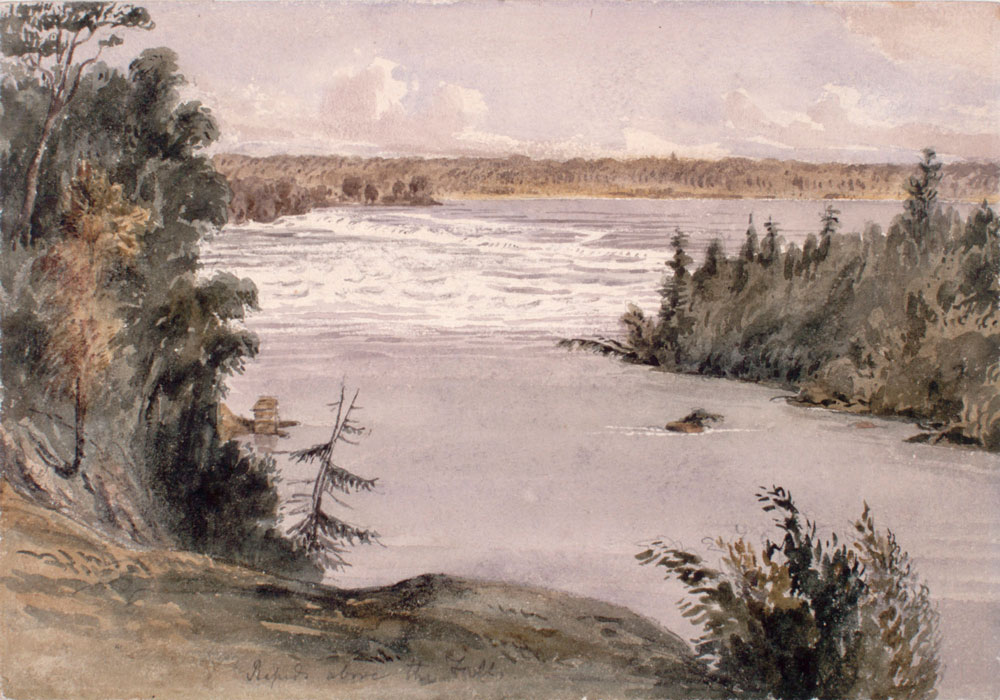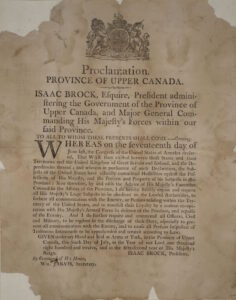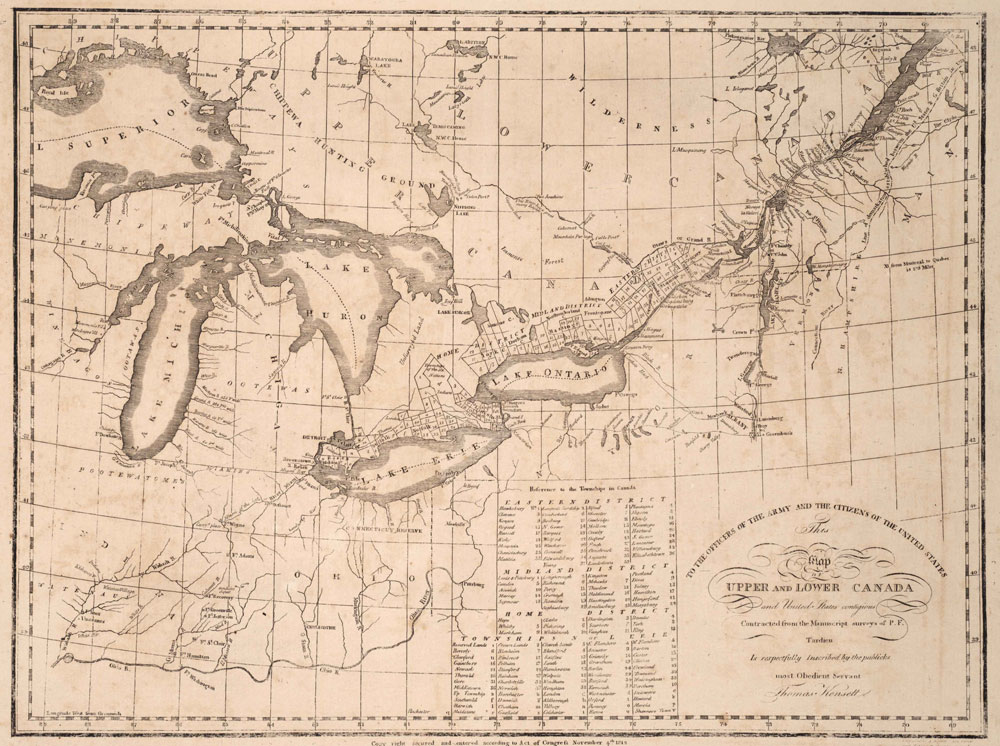The War of 1812
With the war in Europe winding down, the de Wattevilles were soon sent to North America to strengthen the British military presence. How different it was here! Virgin forest and rough terrain put their training to the test. Instead of populated towns and cultivated farmland, they encountered a thinly populated country. Villages were connected by a network of muddy paths and corduroy roads. Settlers located close to lakes and rivers whose waters provided drinking water and transportation.

Watercolour with brushpoint and black ink with scraping out over pencil on wove paper. Artist: Philip John Bainbrigge, 1817-1881. Library and Archives Canada, Acc. No. 1983-47-45R.
As they marched through the wilderness towards their new post, Andreas Korgto and the other Lithuanians may have thought about how they came to be here. Britain had been at war with Napoleon Bonaparte, the French emperor, and were blockading French ports to disrupt foreign trade. This had a devastating impact on the United States. It depended on France for political support and markets for their export goods. The Royal Navy stopped American ships in international waters, arresting American sailors as British deserters. In addition, the Americans were looking to expand westward, and the British were in the way. The Canadas were a tempting target for conquest.
The tension finally exploded. In 1812, the United States of America declared war on the United Kingdom. Upper and Lower Canada were to be both the target and battleground. Indigenous allies of the British, the scattered settlements and the commercial centre of Montreal were all endangered by American forces.

Broadside Proclamation to the Province of Upper Canada announcing the war has begun. Sir Isaac Brock proclaimed on July 6, 1812. Digital Archive of the Toronto Public Library
Facing the Americans were just 1,600 full-time British soldiers and a smattering of militia units. More soldiers were desperately needed to defend British possessions in the Canadas.
I believe that in four weeks from the time a declaration of war is heard on our frontier, the whole of Upper Canada and a part of Lower Canada will be in our power.
Representative John C. Calhoun, United States Congress, 1812
Among the reinforcements were the de Watteville Regiment. One of the soldiers was Andreas Korgto. He was described as having brown hair and a fresh complexion. He had enlisted as a private in August 1810 from a prison ship in Southampton harbour. His enlistment records listed him as being a native of Skrebėnai, Jonava county.
As in all wars, duty and a sense of adventure would have factored into many a soldier’s decision to enlist. For Andreas Korgto and other Grand Duchy Lithuanians, enlistment was a practical decision. It was better to work as a soldier than to live in the misery of a prison hulk.

“To the Officers of the Army and the Citizens of the United States: This Map of Upper and Lower Canada, and United States Contiguous.,”. Thomas Kensett, (1786-1829). Digitus – Online Exhibitions from the Thomas Fisher Rare Book Library.
After crossing the Atlantic, Andreas found himself at the centre of a war that would ultimately shape the future of North America.

